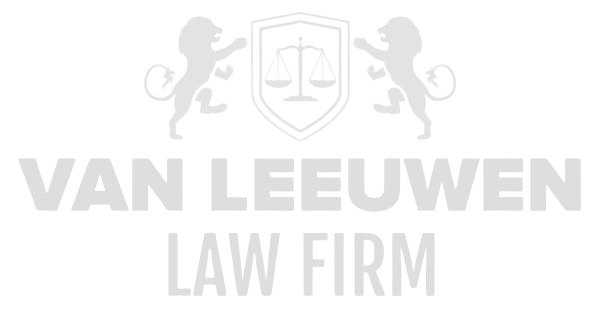Software licenses constitute the core legal framework that governs the manner in which end-users, organizations, and third-party entities interact with computer programs. These agreements articulate granular provisions concerning installation rights, usage parameters, distribution limitations, and modification entitlements—parameters that vary significantly between proprietary and open-source models. Proprietary licenses frequently impose stringent restrictions on copying, reverse engineering, or redistribution, while open-source licenses may empower users to inspect, modify, and share source code under defined conditions. Crucial ancillary clauses often address warranty disclaimers, limitations of liability, indemnification obligations, and adherence to applicable statutory and regulatory regimes. Given the ubiquity of software in virtually every operational domain—from cloud-based infrastructure and embedded IoT systems to enterprise resource planning and customer-facing mobile applications—any dispute or non-compliance related to software licensing can precipitate severe operational disruptions, financial liabilities, and erosion of stakeholder trust. Furthermore, allegations of (a) financial mismanagement, (b) fraud, (c) bribery, (d) money laundering, (e) corruption, or (f) violations of international sanctions tied to licensing arrangements can compound legal exposure, trigger multi-jurisdictional investigations, and inflict long-lasting reputational damage on companies, their leadership, and affiliated governmental bodies.
Financial Mismanagement
Allegations of financial mismanagement in software licensing often revolve around improper capitalization of licensing costs, misallocation of expense categories, or failure to apply the correct amortization schedules for perpetual versus subscription-based licenses. In scenarios where large-scale enterprise agreements or volume licenses are procured, inaccurate forecasting of renewal obligations and subscription fees can lead to under-reserving for liabilities, overstated profitability, and distorted cash-flow projections. Discrepancies may surface when licensing expenditures are recorded as capital assets despite lacking the requisite permanence or when subscription services are erroneously classified as one-time costs. Such misstatements can prompt restatements of financial results, provoke investigations by auditing firms, and lead to penalties from securities regulators. Directors and supervisory officers bear fiduciary duties to ensure that internal controls—such as license utilization audits, budget monitoring processes, and contract-level financial reconciliations—are robust and consistently applied. Absence of these controls can culminate in unexpected liabilities, eroded investor confidence, and cascading operational budget shortfalls.
Fraud
In the realm of software licensing, fraudulent conduct may involve deliberate overbilling for license seats, forging license certificates, or misrepresenting adherence to licensing metrics. Some service providers have been known to inflate user-count audits to secure higher fees, supply counterfeit license keys, or misstate the scope of rights granted under OEM agreements. Clients may also engage in fraudulent practices by clandestinely deploying unlicensed copies, manipulating usage-tracking logs, or fabricating compliance reports to evade audit penalties. Detection typically requires comprehensive forensic IT reviews, comparison of license server logs against contractual entitlements, and expert validation of cryptographic license tokens. Upon discovery, fraud claims may spawn contract rescission, demands for restitution, and potential civil or criminal liabilities. Moreover, both licensors and licensees implicated in fraudulent schemes face heightened scrutiny during future audits, loss of privileged audit-settlement terms, and possible exclusion from partner-program benefits.
Bribery
Bribery allegations connected to software licensing agreements often emerge when procurement agents or channel partners receive illicit incentives in exchange for steering license renewals, upsell opportunities, or exclusive distribution rights toward particular vendors. Bribes can take the form of cash payments, lavish travel, gift cards, or promises of favorable future contracts. Under anti-bribery statutes—such as the U.S. Foreign Corrupt Practices Act or the UK Bribery Act—both entities and individuals may incur severe sanctions for facilitating or tolerating such improper inducements. Effective mitigation requires implementation of transparent procurement policies, mandatory conflict-of-interest disclosures, routine vendor-due-diligence exercises, and clear escalation channels for suspicious solicitations. Failure to uphold these standards can result in multi-million-dollar fines, debarment from public-sector licensing deals, and personal liability for directors or supervisory board members, thereby disrupting licensing continuity and undermining strategic technology initiatives.
Money Laundering
Money laundering risks in software licensing transactions surface when illicit proceeds are funneled through license fees or service agreements to conceal the origin of funds. Complex, high-value licensing deals—particularly those spanning multiple jurisdictions and currency exchanges—can be exploited to layer and integrate laundered finances. Techniques may include inflated consulting add-on fees, rapid pre-payment of multi-year subscriptions without clear business justification, or phantom sub-contracts for customization services. Anti-money laundering compliance in such contexts demands rigorous Know-Your-Customer and Know-Your-Transaction protocols, blockchain-enabled audit trails for digital payments, and continuous transaction monitoring for anomalous patterns—such as sudden bulk payments or repetitive micropayments across unrelated entities. Regulatory lapses expose organizations to asset seizures, heavy civil fines, and criminal prosecution of culpable officers, while also tarnishing relationships with financial institutions and strategic alliance partners.
Corruption
Corruption in software licensing ecosystems extends beyond direct bribery to encompass practices like nepotistic engagement of consultancy firms for license deployment, manipulation of license renewal processes to favor affiliated resellers, or collusion among internal stakeholders to allocate licensing business to shell companies. Such conduct undermines fair market competition, breaches corporate governance principles, and violates anti-corruption regulations across multiple jurisdictions. Detection generally relies on forensic review of procurement records, email correspondence revealing quid-pro-quo arrangements, and analysis of related-party transaction disclosures. Preventative measures include rotation of licensing approval authorities, deployment of e-procurement platforms with automated audit trails, and establishment of secure whistleblower mechanisms. Once corruption allegations arise, swift injunctive orders, contract suspensions, and asset freezing may be necessary to stabilize operations. Consequences range from director disqualifications and disgorgement of ill-gotten gains to corporate criminal liability and potential revocation of operating licenses.
Violations of International Sanctions
Global software vendors and multinational licensees must navigate a complex matrix of trade embargoes and sanctions lists administered by bodies such as the United Nations, the European Union, and national agencies like OFAC. Violations occur when software downloads, license activations, or updates are provisioned to sanctioned entities or jurisdictions—actions that may contravene export-control laws governing encryption technologies or data-processing capabilities. Compliance frameworks should integrate automated screening of all parties against current sanctions databases, geo-fencing of digital distribution channels, and legal vetting of inbound and outbound license transactions. Audit logs capturing IP addresses, geolocation metadata, and transactional timestamps provide essential evidence of compliance or breach. Infractions can trigger substantial civil penalties, suspension of export privileges, and criminal exposure for responsible executives. Moreover, remediation efforts—such as unilateral contract terminations, re-licensing via compliant intermediaries, and broad-scale policy overhauls—are often required to restore regulatory standing and safeguard ongoing software support and update mechanisms.










